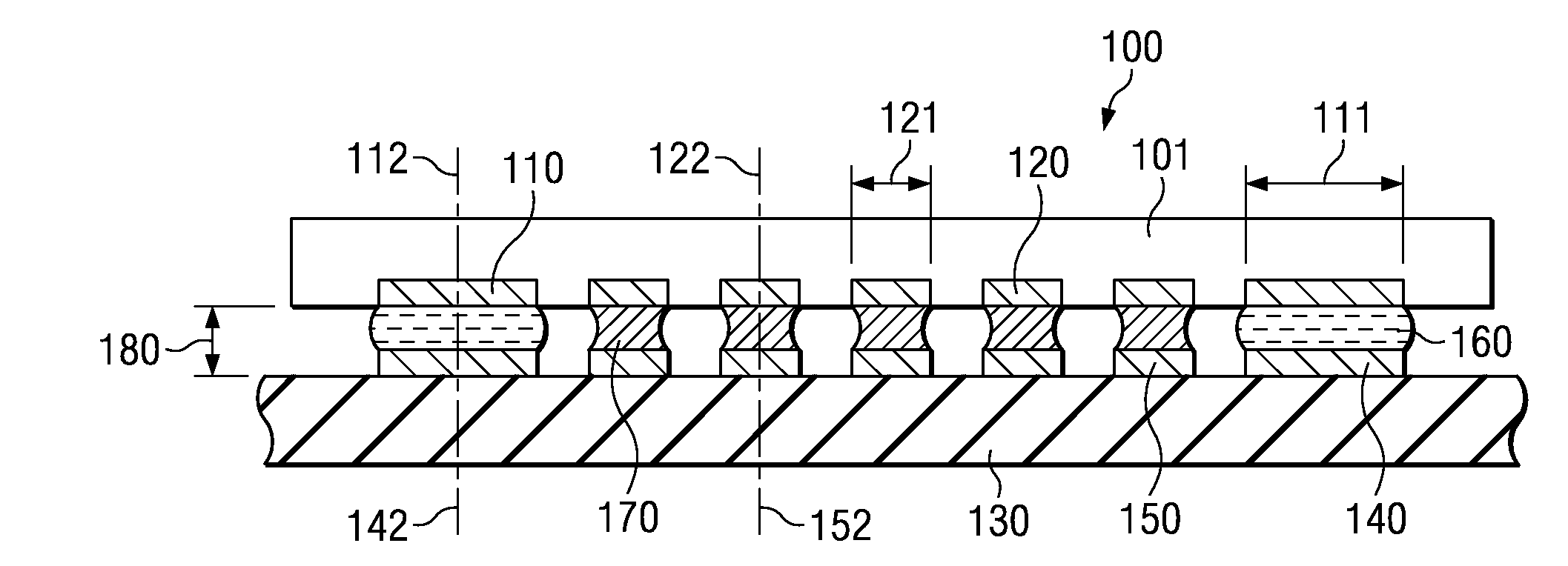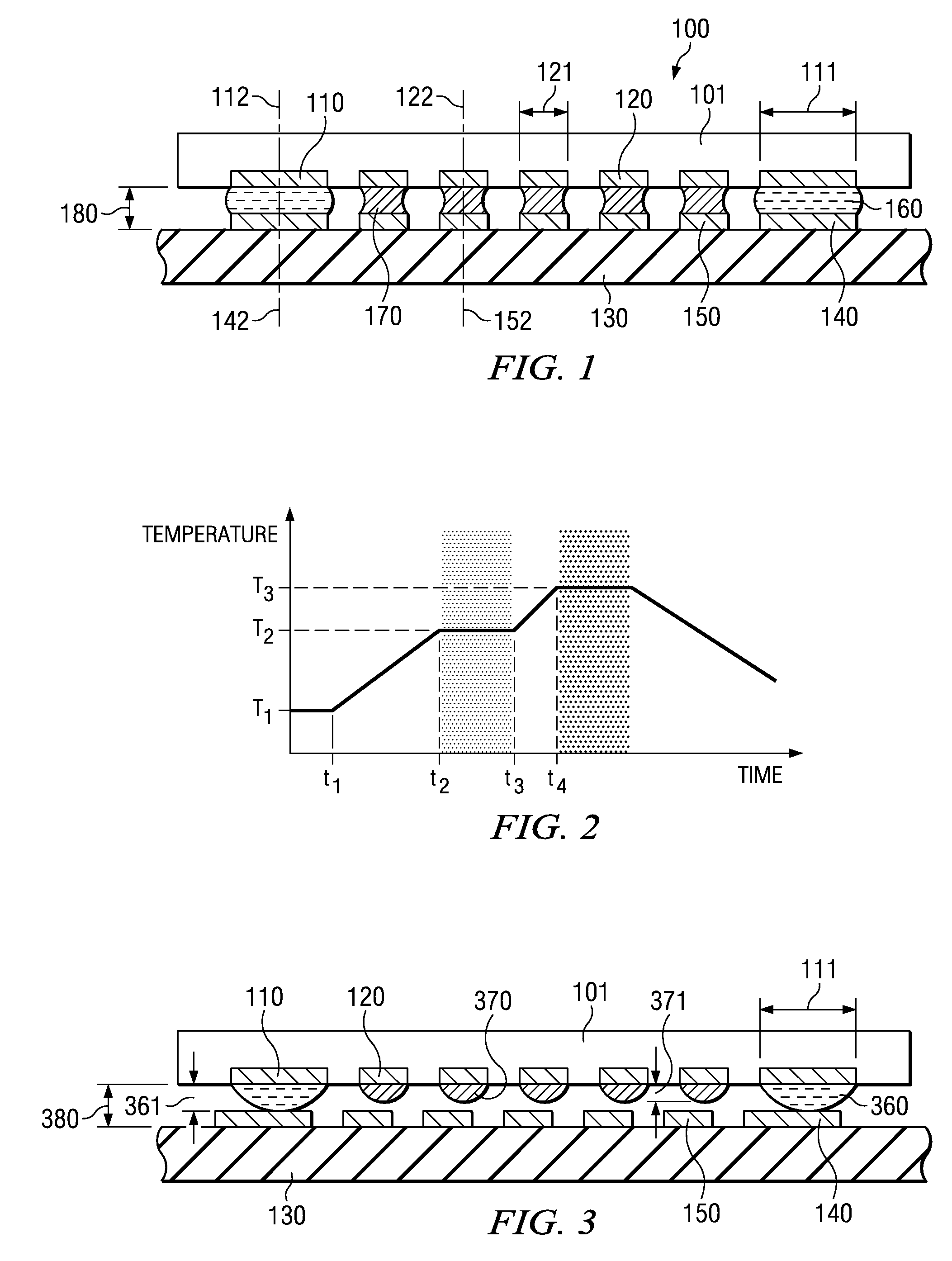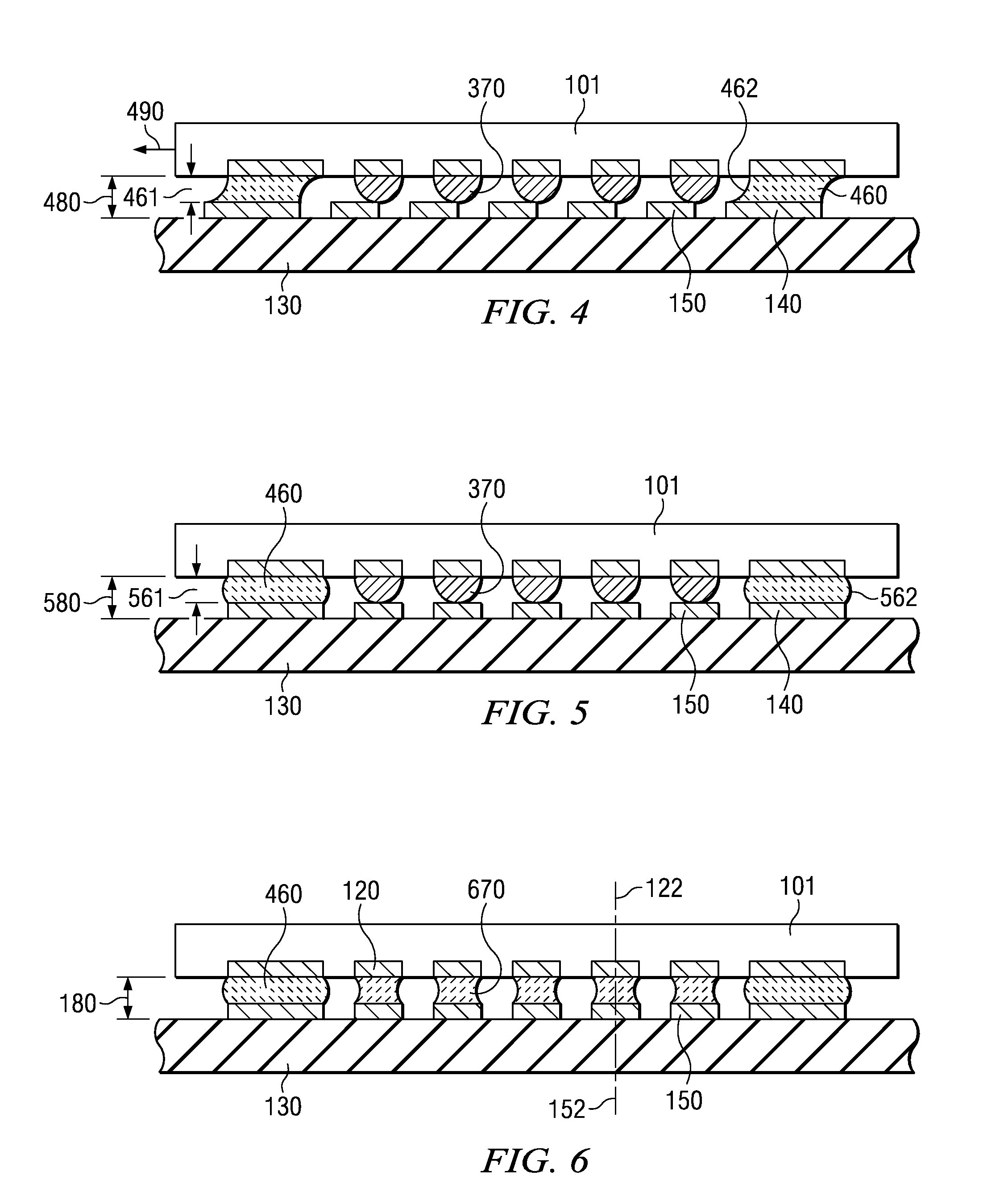Two-solder method for self-aligning solder bumps in semiconductor assembly
- Summary
- Abstract
- Description
- Claims
- Application Information
AI Technical Summary
Benefits of technology
Problems solved by technology
Method used
Image
Examples
Embodiment Construction
[0020]FIG. 1 illustrates an exemplary embodiment of an assembled device generally designated 100. Device 100 includes a semiconductor chip 101 with a first set of metallic contact pads 110 and a second set of metallic contact pads 120. The first contact pads 110 have a first area, indicated in FIG. 1 by linear dimension 111, and may be electrically inactive; pads 110 are herein referred to as alignment pads. Second contact pads 120 have a second area, indicated in FIG. 1 by linear dimension 121, and are electrically active; pads 120 are herein referred to as function pads. Preferably, the first area is greater than the second area, but in other embodiments they may be equal. The first and the second contact pads are made of a metal such as copper or aluminum and have a surface metallurgically configured to be wettable and solderable. As an example, the contact pad surfaces may include a layer of nickel followed by a layer of palladium and an outermost layer of gold.
[0021]Device 100 ...
PUM
| Property | Measurement | Unit |
|---|---|---|
| Melting point | aaaaa | aaaaa |
| Melting point | aaaaa | aaaaa |
| Melting point | aaaaa | aaaaa |
Abstract
Description
Claims
Application Information
 Login to View More
Login to View More - R&D
- Intellectual Property
- Life Sciences
- Materials
- Tech Scout
- Unparalleled Data Quality
- Higher Quality Content
- 60% Fewer Hallucinations
Browse by: Latest US Patents, China's latest patents, Technical Efficacy Thesaurus, Application Domain, Technology Topic, Popular Technical Reports.
© 2025 PatSnap. All rights reserved.Legal|Privacy policy|Modern Slavery Act Transparency Statement|Sitemap|About US| Contact US: help@patsnap.com



